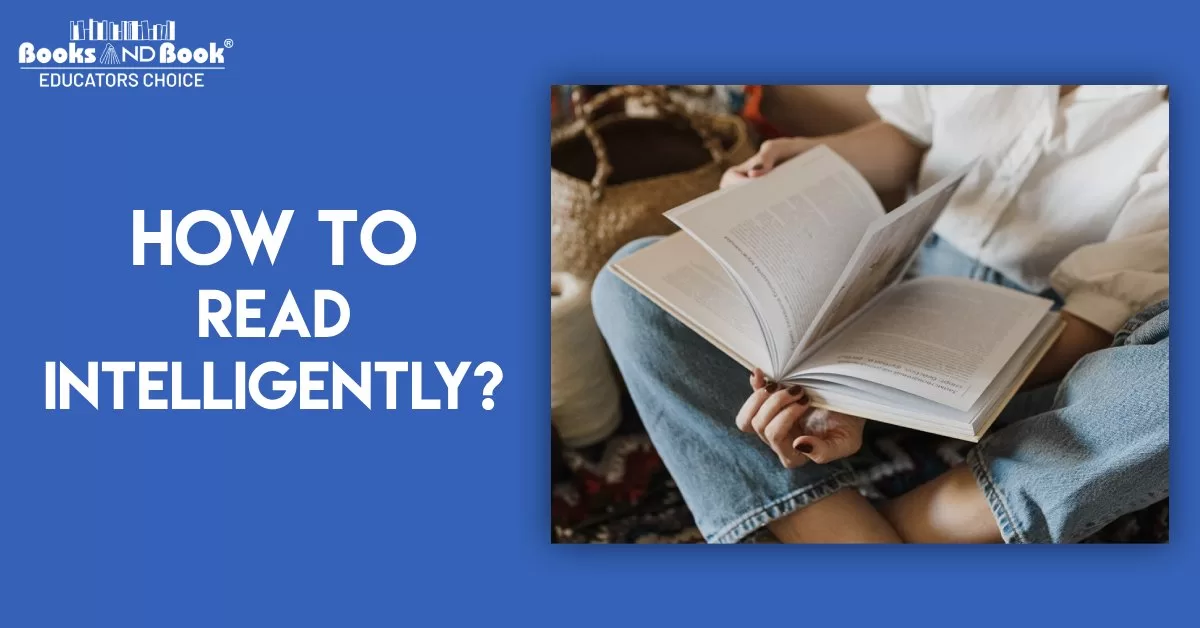Reading is a pivotal skill for absorbing information and fueling self-improvement. But rather than a passive activity, the key to enrichment from written material lies in an intelligent approach centered around comprehension, evaluation, and application of concepts within a larger context.
So how to read intelligently and truly maximize value from your books and resources?
Intelligent reading signifies an active, critical analysis mindset that engages the full faculties of reason, concentration, and imagination. It prioritizes focused energy around key ideas, organizational principles, and contextual relationships within a work rather than superficial word processing.
This article will explore advanced reading comprehension techniques to elevate your reading to richer, more rewarding heights through strategic habits, varied methods, and an insightful perspective. Developing intelligent reading habits provides enrichment and growth rather than mere entertainment.
Benefits of Intelligent Reading
Approaching reading intelligently rather than casually produces profound benefits that enhance professional, academic, and personal abilities. Intelligent readers reap advantages including:
Improved Comprehension and Retention
Intelligent reading techniques like contextualization, focused annotation, asking probing questions, categorizing information, activating prior knowledge, and relating specifics to organization frameworks significantly strengthen comprehension and recall of material. Casual readers may only grasp a surface understanding that quickly fades. An engaged, analytical approach cements knowledge, empowering application.
Enhanced Critical Thinking Skills
The active questioning and evaluation involved in intelligent reading builds crucial skills: comparing claims, analyzing arguments, identifying assumptions, deductive reasoning, interpreting implications, assessing credibility, and formulating counter-arguments. These transferrable higher-level thinking abilities pay dividends across writing, speaking, problem-solving, and decision-making.
Deeper Learning
SIMPLE passive reading easily allows isolated facts and concepts in one’s mind that fail to connect to a broader understanding. Intelligent readers synthesize key learnings, relate specifics to general principles, bridge concepts across works and subject fields, contextualize ideas, and emerge with richer, multidimensional mental frameworks around topics. This integration powers deeper learning.
Fueling Insight and Application
Advanced analytic and evaluative processing of text via intelligent reading techniques incubates original thinking by sparking insights around perspectives, relationships, and implications that inspire personalized conclusions, interpretations, and applications. Fresh ideas emerge to drive change.
Enhanced Communication Skills
The enriched vocabulary, nuanced grammar, and sophisticated organization exposed through literary reading alongside focused techniques to unlock comprehension translates into improved writing, speaking, and listening abilities. Communication channels into an audience’s experiences making thoughtful, high-level exchange possible.
In short, intelligent reading powers skills making well-rounded critical thinkers, informed decision makers, cogent communicators, and agents of change. The effort invested pays intellectual dividends across a lifetime.
How to Read Intelligently
Enhancing reading intelligence for better understanding and gaining deeper insights from text requires cultivating strategic habits around engagement, focus, time allotment, technique adjustments, and resource utilization. Below are effective methods for intelligent reading:
Active Engagement
Dynamic interaction with text fuels comprehension. Habits like taking notes to crystallize learning, asking probing questions that target gaps or confusion, and discussing concepts to validate or evolve perspective provide accountability to understand versus passively receiving words. These habits strengthen analysis for deeper insights.
Selective Focus
Not all content deserves equal attention. Identifying organizer frameworks and key ideas for increased focus while skimming subordinate details or tangents prioritizes reading energy around core material for efficient understanding. This selectivity balances relevance and efficiency.
Time Management
Setting routines around distraction-free reading time enables absorption without constant task switching’s damaging impacts on comprehension. But also modulate techniques and pace to balance a focused understanding of difficult passages with speedier overview scanning according to unique needs.
Varied Reading Techniques
Fluidly moving between overview skimming for structure, slow in-depth analysis, targeted keyword scans, read-aloud sessions to catch nuances, and review of annotations, among other techniques provide flexibility to apply appropriate methods to enrich understanding for a given reading goal.
Utilizing External Resources
Even intelligent readers hit the limits of background knowledge. Habitually keeping trusted references like dictionaries, subject matter experts, or secondary sources on hand for illumination bolsters comprehension and prevents frustration without over-reliance.
Develop proactive habits around these facets of reading methodology to continuously upgrade techniques and enjoyment of reading. Refine which combinations work for particular materials and needs through self-experimentation.
Reading Tools and Strategies
Serious strategies for reading critically and intelligently often utilize supportive tools and tactical frameworks that enhance comprehensive understanding.
Annotation and Highlighting
Actively engaging with texts via underlining, highlighting, or margin notes crystallizes important passages, empowers finding central themes, visually links related concepts across chapters, captures questions/inspirations at the moment, and boosts recall.
Variations like using multiple colors, symbols, or codes serve different purposes, say green for key ideas, yellow for supporting details, and red for contradictions or questions. Just be judicious of over-marking in ways that become less decisive or distracting.
SQ3R
This classic framework outlines a strategic reading sequence to methodically build comprehension:
S – Survey chapters by skimming introductions/summaries for structure
Q – Generate questions before readings to guide insights
R – Read closely while actively responding via notes, links, queries
R – Recite and recall key information without referencing text
R – Review and summarize takeaways, questions, and responses
Apply cycles systematically chapter by chapter. Refresh questions based on previous chapter recaps. Other similar sequential strategies like PQ4R (Preview, Question, Read, Reflect, Recite, Review) exist too.
Targeted Skimming
When short on time, skim opening/closing paragraphs of chapters and prominent headings to quickly identify central themes and structure before deciding if fuller reading merits time allocation. Also, scan topic sentences of paragraphs and graphics. Practice makes you faster without losing comprehension.
Dual Coding
Boost retention by translating verbal descriptions into visual diagrams, models, timelines, sketches, etc. tapping into spatial and visual processing strengths while reconciling them with verbal inputs. Leverage multiple modes.
Discussion Groups
Verbalizing takeaways debates around interpretations, and exposing ideas to critiques cements intelligent reading’s goals of analysis and meaningful application better than solitary study. Seek or create book clubs, class discussion sections, and online forums around materials to verbalize and refine thinking.
Experiment with tools aligning with reading goals and material types to determine optimal personal strategies. Consistently applying chosen techniques builds skills to apply widely.
Contextual Reading
Applying contextual techniques for intelligent reading comprehension involves understanding a work’s background, place within broader landscapes, and real-world applications to maximize meaning.
Understand the Context
Relate the author’s background such as training, biases, and influences to properly interpret messaging. Chart a work’s central arguments and contribute evidence against historical settings.
For primary sources, explore the original audience. Identify formats like journalism vs technical write-ups vs analogies that shape style and intent. Dig into metaphors. Getting context lays the groundwork to read insightfully.
Connect to the Wider Landscape
Chart how specific ideas, frameworks, and vocabulary fit among related concepts, theoretical models, or within a field/discipline’s key literature and debates. This wider schematic of relationship hierarchies reveals a deeper meaning and more intricate learning.
Bridge to Other Disciplines
Evaluate if specific mechanisms, formulas, concepts, or ways of thinking apply across fields like spotting common cognitive biases, scientific methods, nonlinear system dynamics, or game theory strategies appearing in distinct contexts for richer synthesis.
Apply to Real World
Relate abstractions to tangible outcomes, decisions, products, or policies through examples and thought experiments. What societal challenges inform this research? What group benefits from these ideas? Who funded this? The applicability test filters intelligent reading.
Overcoming Challenges in Intelligent Reading
Practicing intelligent reading techniques requires a concerted effort that common obstacles can derail. Employing the below tips for smart and insightful reading helps maintain motivation and comprehension.
Address Loss of Focus
Intelligent reading demands prolonged concentration that students often lack from wired distractions and multitasking. Schedule sessions before fatigue sets in. Eliminate notifications during reading periods and apps enabling distraction. Change locations when concentration wavers. Stay hydrated and well-rested.
Tackle Complex Arguments
Dense academic material with sophisticated vocabulary or theoretic models challenges comprehension. Break down sentences. Lookup definitions. Identify logical structure. Visualize relationships. Take notes. Seek alternate explanations of key concepts ungrasped.
Overcome Perceived Difficulty
A text’s high page count, writing style, or stereotypes about the subject area may heighten perceptions of complexity and undermine confidence, especially for reluctant readers. Set small milestones. Schedule rewarding activities paired with reading to reinforce positivity.
Combat Regression Tendencies
Inadequate focus often requires rereading sentences or whole paragraphs multiple times without improved retention, wasting time in a downward comprehension spiral. Tracking with a finger or pointer enhances attentional control.
Check Consistent Comprehension
Intelligent readers self-monitor with periodic recaps of takeaways, paraphrasing main ideas, explaining them to others, and checking notes to ensure deep comprehension wasn’t assumed while glazing over text.
Apply personal strategies, options, and professional assistance to address reading barriers as they arise before losing significant motivation or falling irrevocably behind.
Conclusion
The enriching potential of reading expands exponentially by adopting an intelligent approach centered around comprehension, evaluation, and application of concepts.
All the intelligent reading methods and reading skills explored here, from focused engagement to contextual review, equip learners to extract deeper meaning from texts to fuel growth.
So dedicate the effort required to read intelligently. Set aside quality time to engage without constant distractions, vary techniques from close annotation to big-picture surveys fitting needs, synthesize ideas within wider subject landscapes, and discuss interpretations with others. Embrace reading’s journey joyfully.
These practices will enhance the way you process information permanently. Soon the profound rewards of reading with intention inspire you to open every book or article asking “how to read intelligently” to unlock its treasures.
FAQ’s
How can I enhance my reading comprehension intelligently?
Employ active reading techniques, such as highlighting key points and taking concise notes.
Is skimming a helpful strategy for intelligent reading?
Absolutely, skimming allows you to quickly grasp the main ideas before delving into the details.
What role does questioning play in intelligent reading?
Question the text as you read, fostering a deeper understanding and engagement with the material.
Can I improve my vocabulary through intelligent reading habits?
Indeed, encountering new words in context helps expand your vocabulary organically.
How does setting a purpose before reading contribute to intelligent reading?
Setting a clear purpose enhances focus and helps you extract relevant information more effectively.
Is there a recommended pace for intelligent reading?
Strive for a balance between speed and comprehension, adapting your pace based on the complexity of the material and your goals.


